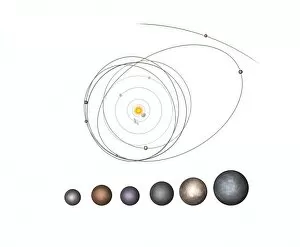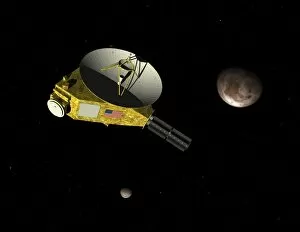Dwarf Planets Collection
"Dwarf Planets: Exploring the Mysteries of our Solar System" In the vast expanse of our solar system, they have captivated scientists and artists alike
All Professionally Made to Order for Quick Shipping
"Dwarf Planets: Exploring the Mysteries of our Solar System" In the vast expanse of our solar system, they have captivated scientists and artists alike. As we gaze at Earth and its faithful companion, the Moon, we are reminded that there is more to discover beyond their familiar presence. These enigmatic celestial bodies, with their unique orbits and intriguing artwork-like surfaces, beckon us to explore further. The New Horizons spacecraft embarks on a thrilling journey towards Pluto and its moon Charon, while the Dawn robotic spacecraft gracefully orbits Ceres and Vesta. Pluto, once considered our ninth planet before being reclassified as a dwarf planet, continues to surprise us. Speculations arise about possible springs of liquid oxygen on its frozen surface – an astonishing revelation that challenges our understanding of this distant world. An artist's concept vividly depicts Dawn entering orbit around Ceres, unveiling its mysteries one by one. Charon looms large beside Pluto like a loyal companion in their cosmic dance through space. Together with Polaris star shining brightly in the background, they create a mesmerizing spectacle for those fortunate enough to witness it. Ceres, Pluto's fellow dwarf planet along with Eris among others scattered across our solar system remind us that size does not define significance. Each holds secrets waiting to be unraveled by intrepid explorers seeking answers about our origins and place in the universe. As New Horizons approaches Pluto and Charon simultaneously captured in one frame against the backdrop of infinite space; we are reminded of humanity's insatiable curiosity pushing boundaries ever further into uncharted territories. The exploration of these dwarf planets expands our knowledge about ourselves as inhabitants of this vast cosmos. It reminds us that within this grand tapestry lies countless wonders yet to be discovered – reminding us how small we truly are amidst the awe-inspiring beauty surrounding us within our solar system.


































